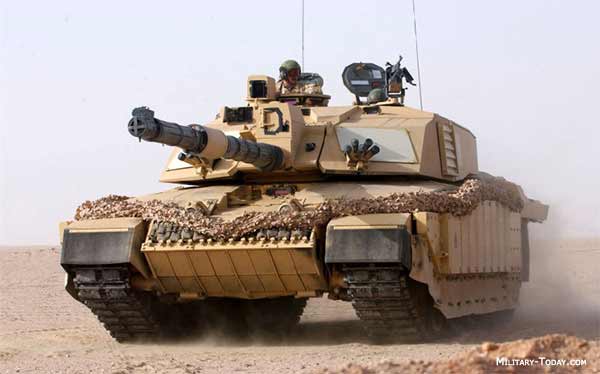
The U.K Army’s main battle tank (the Challenger 2) is yet to receive any significant capability upgrades, leaving it outmatched by potential adversaries such as the Russian ‘Armata’ tank, the House of Commons Committee on Defence has commented.
The committee commented last week while announcing the launch of a new inquiry into the procurement and use of Armoured Fighting Vehicles in the British Army.
The British Army’s current fleet of Armoured Fighting Vehicles (AFVs) is characterised by increasing age and creeping obsolescence. Vehicles such as the FV430 series armoured personnel carrier have been in service since the 1960s (albeit with a number of life extension upgrades). The main armoured infantry vehicle (Warrior) was introduced in the late 1980s, while the Army’s main battle tank (the Challenger 2) has been in service for around 20 years.
To address these issues, the Ministry of Defence has in place a series of programmes which have encountered a number of difficulties:
- The Ajax programme (£5.3 billion), designed to replace the Army’s armoured reconnaissance vehicles. In May 2020 it emerged that the delivery of the first batch of Ajax vehicles was to be delayed as they were found not to be ready to be accepted into service. The Army expects to procure some 600 of these vehicles by the mid-2020s.
- The Warrior Capability Sustainment Programme (£800 million) has been running since 2011 but, despite having spent over 50% of the allocated budget, has yet to place a manufacturing contract. The programme has experienced significant technical problems, with a current in-service date of 2024 (originally planned for 2017);
- The Challenger 2 Life Extension Programme (budget to be determined) aims to extend the tank’s service life until 2035. This programme has been revised to increase its scope, including upgrades to improve its lethality and survivability in the face of emerging peer threats;
- The Mechanised Infantry Vehicle (£2.8 billion) programme to introduce a new high-mobility medium-weight infantry vehicle in the form of the Boxer eight-wheeled vehicle. This will replace the aged FV430 fleet of vehicles and is key to delivery of the Army’s Strike Brigade concept; and,
- Multi Role Vehicle- Protected (budget to be determined) is a UK requirement to replace the Landrover and existing protected vehicle fleets with a common platform. This programme is currently on hold, partly as a result of the US Army’s review of the requirements for its Joint Light Tactical Vehicle (JLTV) programme which is expected to inform the UK’s decision on which vehicle to procure.
The programs contribute to the fulfilment of the Army’s current vision for its future and the ability to deploy an armoured division as part of the MOD’s Joint Force 2025 objective.
The committee has set September 4, 2020, as deadline for written submissions to check progress in delivering the British Army’s armoured vehicle capability.
The tank is designed for use in the direct fire zone. Its primary role is to destroy or neutralise armour. However it has the ability to engage both hard and soft targets and can operate across a spectrum of high intensity conflict, counter insurgency and peace keeping roles.
The vehicle is equipped with an L30 120mm rifled tank gun, firing both long rod penetrator and High Explosive Squash Head (HESH) ammunition natures. Secondary armaments are provided with a 7.62mm co-axial chain gun and a 7.62mm pintle mounted General Purpose Machine Gun.
Optical and thermal imager sights are provided for both the Commander and Gunner, including an independent 360 degree panoramic sight for the Commander. The sighting systems, turret and gun are fully stabilised enabling rapid target engagement when static and on the move.
Mobility is provided through a 12-cylinder, 1,200hp Perkins CV12 diesel engine with a David Brown TN54 gearbox, providing six forward and two reverse gears. A double pin track with Hydrogas suspension and a Hydraulic Track Tensioner provide platform stability covering flat road surfaces through to rough cross country terrain.
Challenger 2 has successfully supported British Army operations in Bosnia, Kosovo and Iraq, as part of which, various survivability, lethality and situational awareness improvements were incorporated under Urgent Operational Requirement projects.
The Challenger 2 Life Extension Project (LEP) is a UK MOD contract to remove obsolescence from Challenger 2 and extend its out-of-service date by ten years to 2035. As well as removing obsolescence, there will be the opportunity to make further capability enhancements. The upgraded tank will be referred to as Challenger 2 Mark 2.
